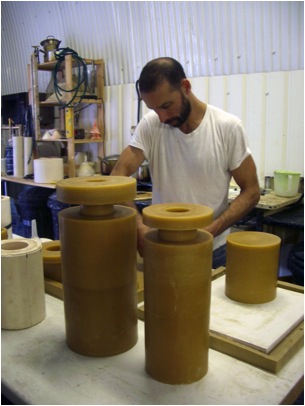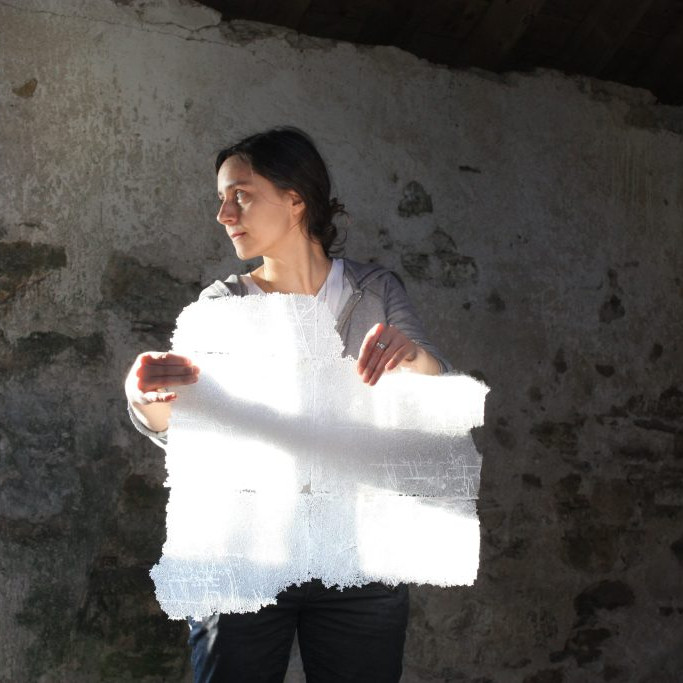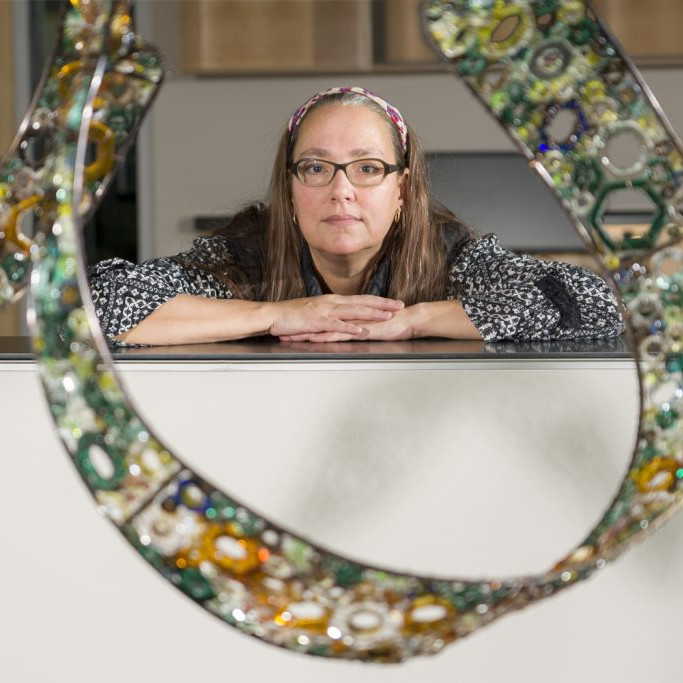Bruno Romanelli Glass Artist - South London, UK
You first became aware of art glass as a medium at Straffordshire Poly. Can you explain what captivated you and what lead you to follow this medium?
I went to Staffs Poly to study Surface Pattern, thankfully the course was a multi-disciplinary design course and I had the opportunity to work in other disciplines before choosing a specialism. Glass was one of the disciplines on offer and I decided to try it, as it sounded really interesting and unusual. Interestingly, it was a 4 week block in glass-blowing though that seduced me enough to make me specialise in glass for the rest of my degree. It was only later that I discovered glass-casting which opened up my eyes to what was possible with this material. The material qualities of transparency/translucency and fluidity/transformation along with the process of making that captivated me all those years ago and still do today.
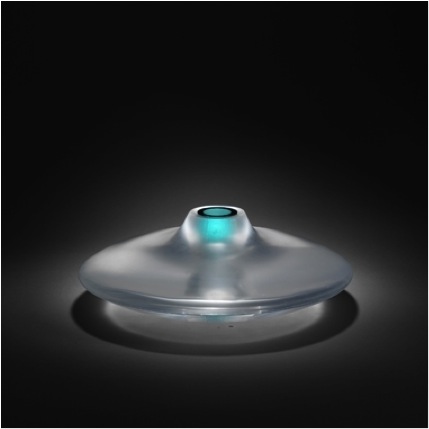
‘Ty1’
Inspiration comes from many directions, nature and man-made objects. Please expand?
I look at many things to give me inspiration, from the mundane to the sublime. What interests me most is light, form and colour and how these three elements combine to give infinite possibilities. All around us in our daily lives we see this interaction, I attempt to distil this in my work. I use very geometric forms that require absolute control and precision making, to achieve what appear to be quite simple forms, and then add the more spontaneous/less predictable material to the equation to give ‘life’ to the piece, which often results in wonderful combinations of ‘organic’ and man-made.
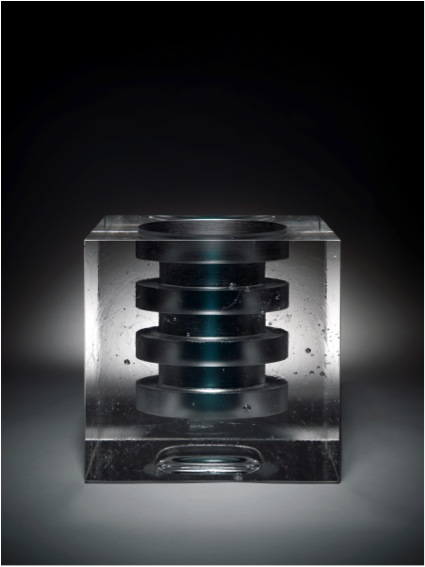
‘Bunda’
Control of form, light and colour is the cornerstone of your work. Can you discuss this?
I use geometric forms as the vehicles for the ideas in my work. I use geometric forms because they allow me to exercise precision control in order to achieve them, and because of their simplicity, they do not fight with the other elements of the piece, rather they are complimentary. Within these geometric forms I use various methods and glass types to ‘interfere’ with light as it interacts with the piece. Optical, translucent, opaque, cloudy, coloured, tinted, and combinations of these effects are used to create each individual piece.
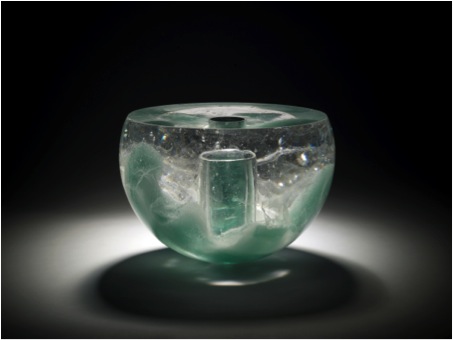
Can you discuss your wonderful collaboration ‘Glass Masterworks Series’ with Peter Layton, Wrightson & Platt and yourself? How the collaboration and the pieces themselves came about?
This is a series of work that I first developed when I was at the Royal College of Art with a glassblower, Graeme Hawes. They were a complimentary line of work alongside other work I was making at the time, which was focused entirely on the hand. At this time the hands were modelled in clay.
More recently, Peter Layton asked me if I would be interested in some kind of collaboration and I jumped at the chance. As I work with Wrightson & Platt quite closely on their range of life-cast glassware, I thought it would be really great to revisit these pieces and work as a three-way collaboration by life-casting my hand for the pieces.
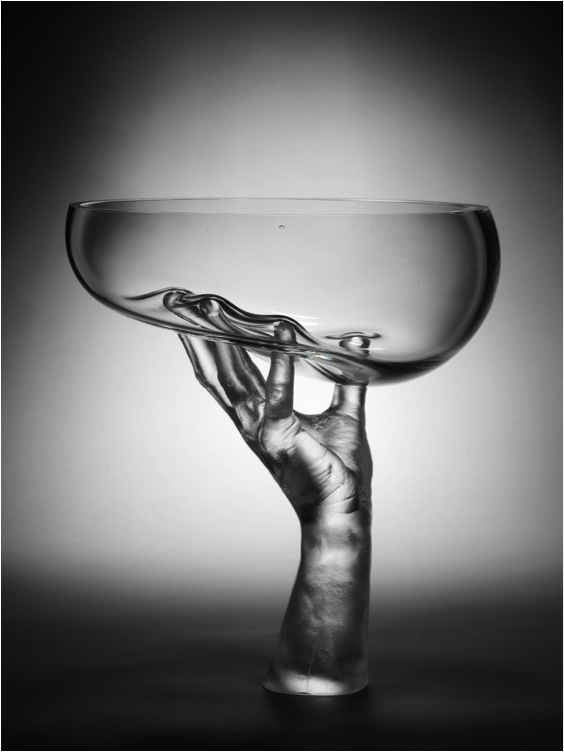
‘Single Handed Vase’
Discuss one of the pieces you have made for ‘Modern Masters’ in Munich?
Mimas – This piece utilises a common format in my current work with the rectangular main form with the cylindrical inserted colour, which opens into the hollowed abstract vessel at the top of the piece.
The main body uses optical bk7 glass, which devitrifies when heated to create the combined clear and veiled effects. The process of casting introduces the movement into the piece as the devitrified surfaces stretch and twist as they flow into the mould. This is then polished to reveal the internal qualities of the piece and the optical properties of the glass.
Colour is introduced by way of the cylindrical insert, which penetrates the main body and the vessel form which sits atop the piece. As light flows through the coloured elements it tints the colourless strands of devitrified glass within the main form creating a dynamic and harmonious effect.
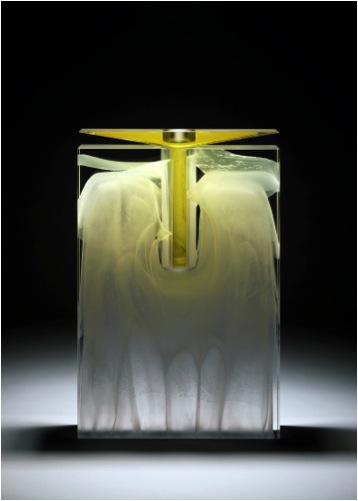
‘Mimas’
Following are some questions related to the video ‘Titan’ by Julian Langham.
How large is your studio are in South London?
Around 1200ft sq
What equipment do you need and do you share this with others?
Kilns, rociprolaps, air-tools, flat-bed grinder, sand-blaster, whirler (lathe).I have an assistant that also uses my equipment to make his work
What ‘Health and Safety’ issues do you need to keep in mind?
Mainly dust from silica based moulds. Sharp edges! And acid harzards.
Does the size of your equipment restrict the size of your work?
I don’t feel restricted size-wise. If I wanted to make larger pieces I would find a way.
Does the outside temperature affect your work – it is often very wet work?
No, outside temperatures do not affect my work.
Once you have a mould, how often do you use it?
Silicone moulds can be used endlessly for making waxes, casting moulds are used once only.
Can you discuss the signing, numbering and dating of your work?
Each piece is signed: B. Romanelli, with a sequential number B(for Bruno)XXX and then the year it was made
You have work in many collections, take one in particular, the Victoria and Albert Museum. Can you discuss the work they entail and the how important it is to you to be in their collection?
The V&A have a piece from 2001, which was a piece from a series of work I was doing entitled ‘Boxed’ which explored ideas of masculinity, identity, sexuality and perception.
I think it’s hugely important to have work in major museum collections as it brings your work to a much wider audience as well as helping to elevate your status within the art world. I’ve lost count of the number of times someone has randomly told me that they saw my piece in the V&A glass collection.
As artists we use these collections as a historical resource as well as an inspiration for our own works, not just the glass collections, but all the interesting objects that can be found in places like the V&A can inspire in otherwise unexpected ways – so to be included in such a world-renowned collection is truly an honour.
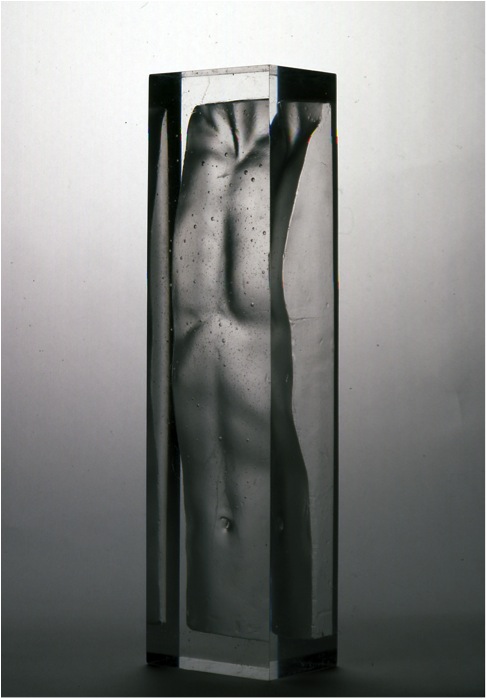
‘Boxed V111’
The majority of your work is for exhibitions. Can you explain how you decide the when and where to exhibit?
Most of the work I make is shown through my Art dealer, Adrian Sassoon, at the major art fairs around the world such as TEFAF in Maastricht, Collect in London and SAD in New York. I also show in other exhibitions and judge the merit of each show based on my knowledge and experience within the glass world. At this stage it is important to have my work seen in the most prestigious events.
Contact details.
Email: info@brunoromanelli.com
Bruno Romanelli, South London, UK
Interview by Deborah Blakeley, April 2014
Think a colleague or friend could benefit from this interview?
Knowledge is one of the biggest assets in any business. So why not forward this on to your friends and colleagues so they too can start taking advantage of the insightful information the artist has given?
Other artists you may be interested in:


